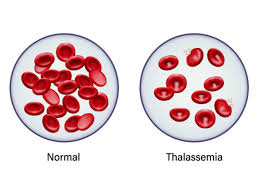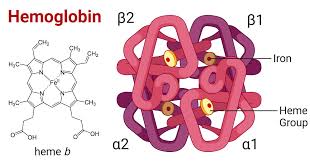WHAT IS THALASSAEMIA?
Thalassaemia is genetically inherited blood disorder characterized by abnormal production of haemoglobin (Hb) (either alpha or beta goblin chains). They result in low haemoglobin and excessive destruction of red blood cells. So, Thalassaemia is not a disease but a disorder of an Individual

To understand how Thalassaemia affects the human body, you must first understand a little about how blood is made.
Blood carries oxygen from your lungs to other parts of your body. Oxygen is carried inside the red blood cells by a substance called haemoglobin.
Here are some key points about thalassemia:
Types and Severity: Thalassemia can be classified into two main types based on which part of the hemoglobin molecule is affected:
- Alpha Thalassemia: This occurs when there is a deficiency or absence of alpha globin chains. Severity varies from mild (silent carriers) to severe (alpha thalassemia major).
- Beta Thalassemia: This results from reduced or absent beta globin chain production. It also ranges from mild (thalassemia minor) to severe (thalassemia major or Cooley’s anemia).
Symptoms: Symptoms can vary widely depending on the type and severity of thalassemia but commonly include:
- Fatigue
- Weakness
- Pale or yellowish skin
- Facial bone deformities (in severe cases)
- Slow growth (in children)
- Enlarged spleen and liver
Genetic Inheritance: Thalassemia is inherited in an autosomal recessive pattern, meaning a child must inherit two mutated genes (one from each parent) to develop the severe form of the disorder.
Diagnosis: Diagnosis typically involves blood tests to measure hemoglobin levels and identify abnormal hemoglobin variants. Genetic testing may also be used to confirm the specific type of thalassemia.
Treatment: Treatment depends on the type and severity of thalassemia but may include:
- Blood Transfusions: Regular transfusions to maintain hemoglobin levels in severe cases.
- Iron Chelation Therapy: To remove excess iron accumulated from frequent transfusions.
- Bone Marrow Transplantation: Curative for some patients, especially those with severe thalassemia who have a suitable donor.
Management: Patients with thalassemia require lifelong management by a specialized healthcare team to monitor their condition, manage complications, and ensure appropriate treatment.
HAEMOGLOBIN (Hb)
HAEMOGLOBIN (Hb) is the oxygen carrying iron component of the red blood cells. It consists of two different proteins, an Alpha and Beta .If the body doesn’t produce enough of either of these two proteins, and the red blood cells do not form properly by bone marrow (Asthimajja) and cannot carry sufficient oxygen.

The Parents’ Association Thalassemic is the national non –profit health organization dedicated to serving patients afflicted with various forms of Thalassaemia most notably the major forms of this generic blood disease

